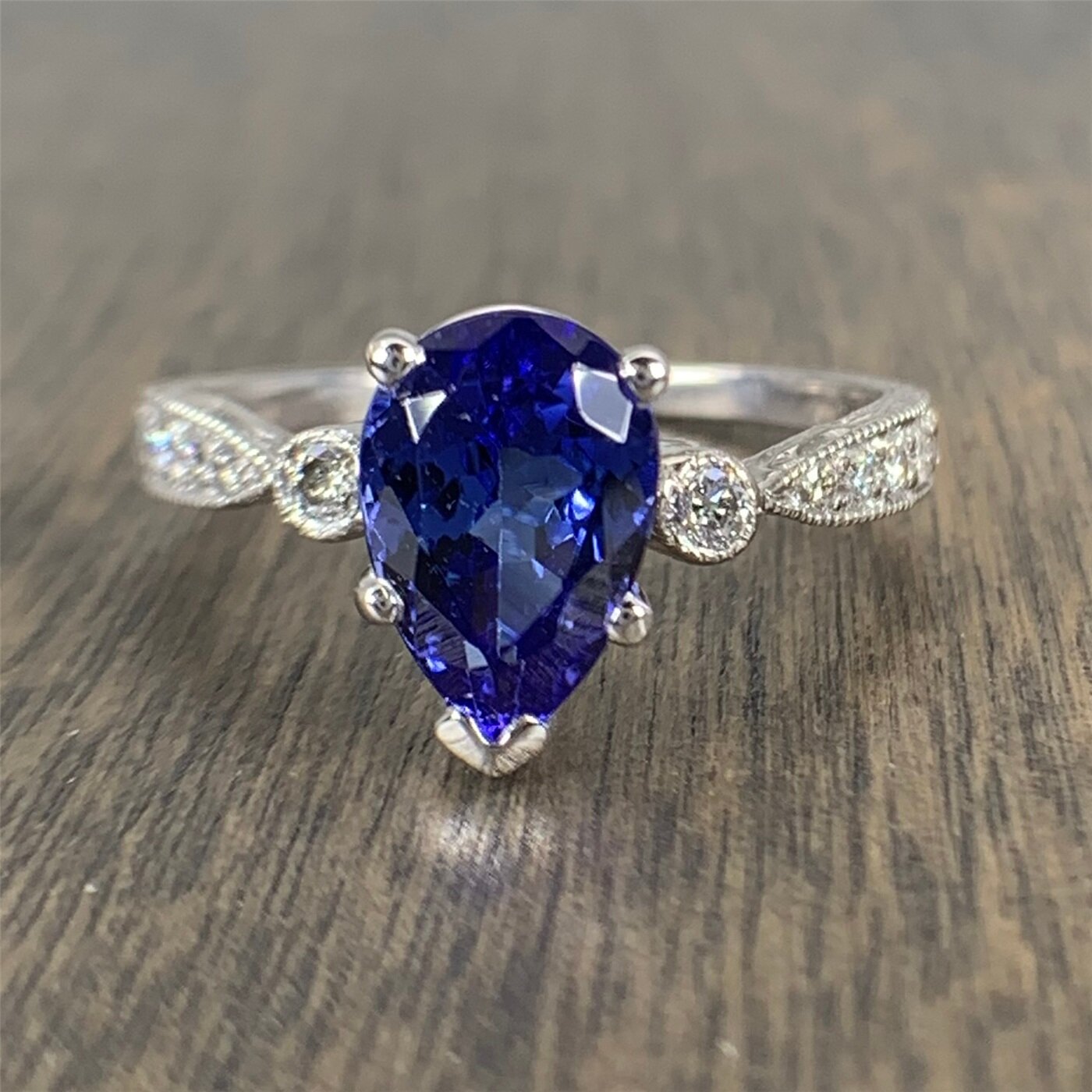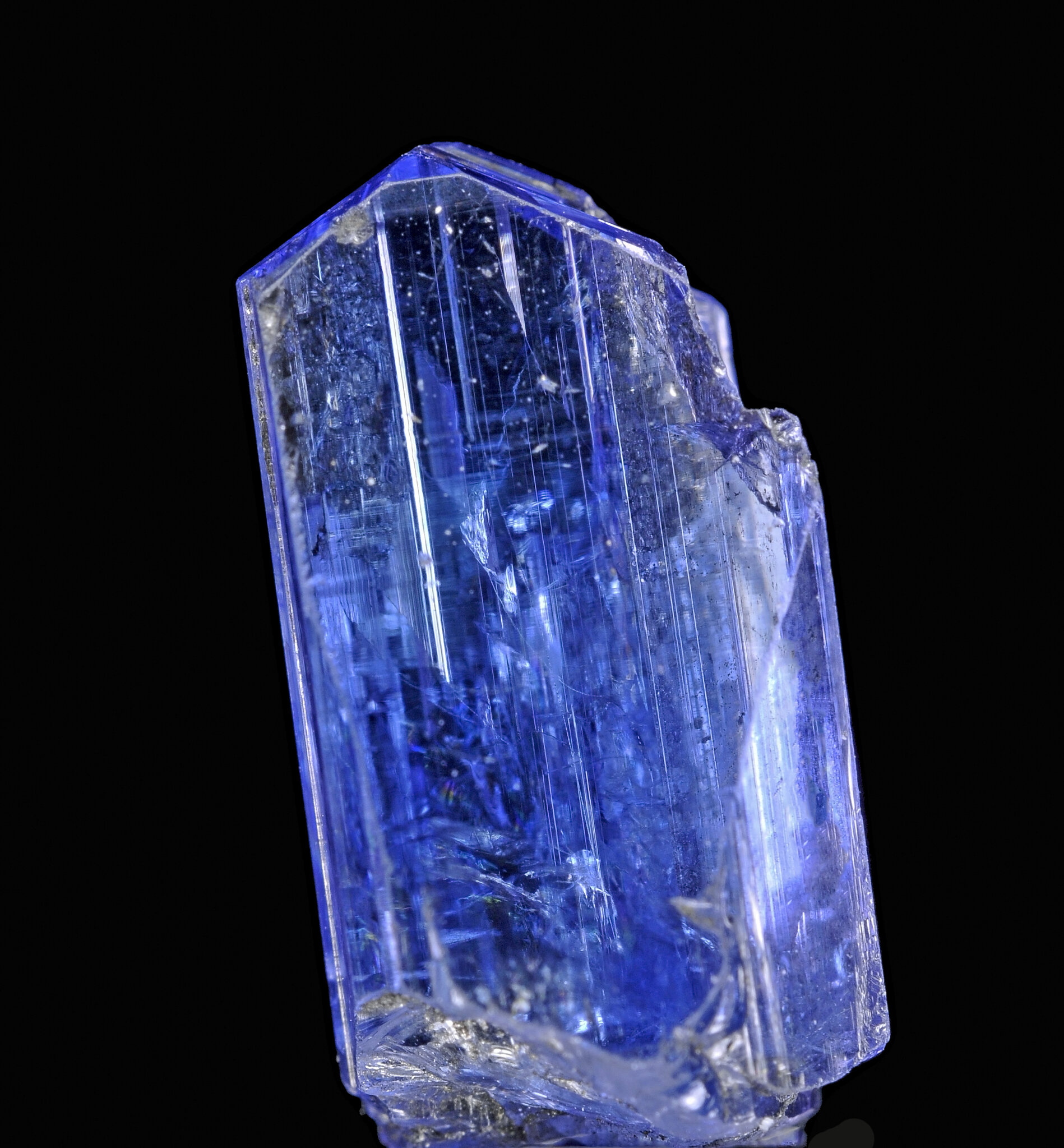December Birth Stones: Turquoise, Tanzanite and Zircon
Turquoise
Meaning: The Victorians used this stone as a sort of forget me not symbol.
History: Turquoise was used all over the world by multiple different cultures. The Native Americans revered the stone and used it in religious symbols and jewelry. Egyptian Pharaohs prized it. Chinese artisans carved the stone out of the earth over 3,000 years ago. When the stone migrated to Western Europe, the Edwardians and Victorians became particularly fond of using Turquoise in their jewelry, and Queen Victoria gifted each of her bridesmaids a turquoise brooch. (If you are a connoisseur of antique jewelry, you will find a lot of rings from the Edwardian and Victorian ages that feature the Turquoise stone.)
Name Origin: The origin of the name ‘Turquoise’ as we know it is literally translated ‘Turkish Stone.’ It got its name when it migrated from Turkey to Western Europe. (Though this is a relatively recent name, given that the stone has been mined for over 3,000 years.)
Sources: One of the world’s most prolific sources for the Turquoise was in New Mexico, but now it is found in Nevada and Arizona. (If you’ve ever traveled to these places, you will see the Turquoise stone featured in many local jeweler’s shops.) It has also been mined in Iran for over 1,000 years, but the world’s largest mines today are found in China.
Fun Facts:
· Turquoise is the stone for the 11th wedding anniversary.
· The Apache believed that tying the stone to their bows made their aim more accurate. They also believed that Turquoise could be found by following a rainbow to its end. (I love that idea.)
· Hindu mystics insisted that seeing a turquoise stone after looking at the new moon would give the onlooker incredible wealth.
· When Archeologists unearthed King Tut’s mask, they discovered that it was richly encrusted with Turquoise.
· King Edward the VIII gave up his throne for the duchess of Windsor, who wore a famous turquoise and amethyst necklace.
· It is said that Cleopatra kept a collection of Turquoise.
Tanzanite
History: After this velvety blue-violet gem was discovered in the 1960s, the famous Jewelers of Tiffany and Co. thought that the gem would gain international appeal, so they became its main distributor. Their publicity campaign used the slogan, “Tanzanite can only be found in two places: Tanzania and Tiffany’s.” The discovery of the Tanzanite was spurred by a natural disaster: after a large fire at the foothills of Mt. Kilimanjaro, the stones shimmered in the earth and turned to violet tones after being exposed to the heat. Over two million carats worth of Tanzanite was mined before regulations had to be imposed.
Name Origin: The Tanzanite was named after its country of origin, Tanzania, and it remains the only place in the world where the stone has been found.
Sources: The deposits of the Tanzanite gemstone are found in only one place: the foothills of Mt. Kilimanjaro. (Sort of a romantic image, isn’t it?) Some of the mines for this stone are over 300 feet deep.
Uncut Tanzanite from Mt. Kilimanjaro
Fun Facts:
· The Tanzanite is the stone for the 24th wedding anniversary.
· The way the Tanzanite is cut can actually can slightly affect the color of the stone, (due to the way the angles catch the light after they’ve been cut), so jewelers are extra careful when cutting the most expensive blue-violet stones in order to preserve its natural color.
Zircon
History: At the time of the Middle Ages, the zircon was said to bring honor and wisdom to whomever owned the stone. Other folklore claimed that it protected against nightmares. Geologists say that the gemstone is one of the oldest in the world, even older than diamonds, and its deposits are 4.4 billion years old. The stone comes in multiple colors, and the clear zircon was confused with the diamond for several centuries.
Name Origin: Comes from the Persian word ‘zargun,’ which means ‘gold color.’ Most common color for the Zircon is blue, but obviously, the Persians knew it primarily as a gold stone, hence its name. Others think the stone was translated from Arabic ‘zarkun’ to mean ‘vermillion.’
The clear zircon that was often confused with diamonds
Sources: It is found in Thailand, Cambodia, and southern Vietnam, but Sri Lanka holds the record for the most zircon deposits found today. Oddly enough, the zircon is often found near deposits of the sapphire, which, (if I were guessing), is probably due to the fact that it is formed with some of the same base minerals.
Fun Facts
· Over the years, cultures have used it in the belief that it will increase one’s appetite (sadly, I wouldn’t qualify for this… ahem) and protect the traveler from potential injuries he might incur along his journey.








